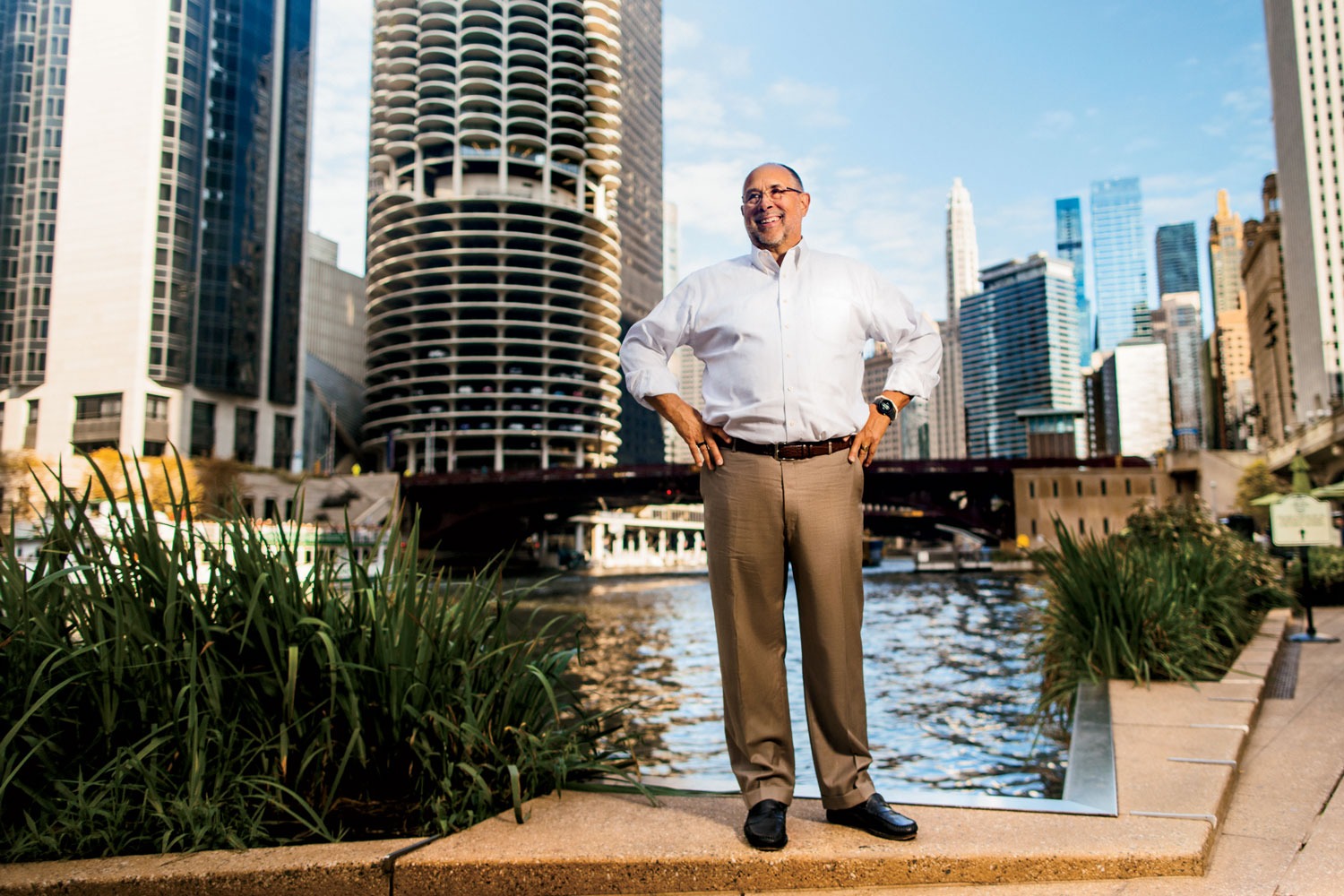It’s a beautiful autumn day along the Chicago River. Tour boats, their passengers gawking at the towers of steel on its banks, glide through the water, sunlight dancing on the surface. A train rumbles over the river at Wells Street. “No Swimming,” warns a sign at the base of the Clark Street Bridge. Sitting at a waterfront coffee shop, Doug McConnell marvels at the river’s transformation. “The Chicago River is the reason the city is here in the first place,” he observes. It made Chicago into an industrial behemoth, which turned the river toxic — so toxic that for decades it was too dangerous to swim in.
Not anymore. In September, the Chicago River Swim, the first city-sanctioned group swim in these waters in 98 years, was held. For a river famous for its flow reversal, this was the culmination of another kind of turnaround. It was a moment of triumph for the city — and a day of joy for those who competed in the one- and two-mile races in the heart of the Loop. “So many of the swimmers told me they couldn’t stop eyeballing around, kind of sightseeing,” says McConnell, the event’s organizer.
A Dundee native and investment banker who lives in Barrington, McConnell is a longtime open-water swimmer; the 68-year-old has traversed the English Channel and circumnavigated Manhattan, a route that includes the once-filthy East River. (“The Chicago River tastes better,” he quips.) But it isn’t just the thrill of a challenge that fuels him — it’s also tragedy. After his father died from ALS in 2006 and his sister Ellen was diagnosed with the disease a few months later (she died in 2018), the siblings launched A Long Swim, a foundation that has raised $3 million for ALS research at Northwestern University Feinberg School of Medicine’s Ozdinler Lab.
The Chicago River Swim was years in the making. McConnell can’t take credit for cleaning up the water, but he spearheaded the labyrinthine effort to get all the approvals for a competition. On race day, which generated $100,000 for ALS research and $50,000 to teach kids in underserved neighborhoods how to swim, he was moved by the sight of so many people splashing around in water deemed safe for swimming after weeks of meticulous testing leading up to the event. “I’m not usually a get-tears-in-the-eyes kind of guy, but that day I got tears in my eyes.” Once again, the Chicago River belonged to the people.




